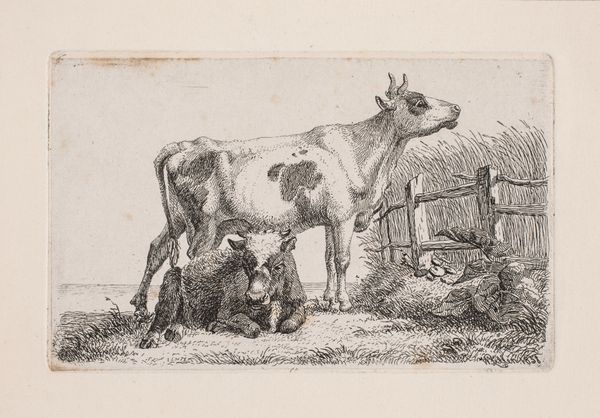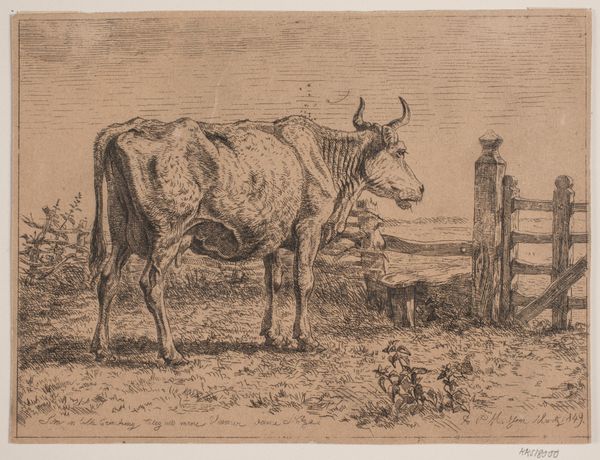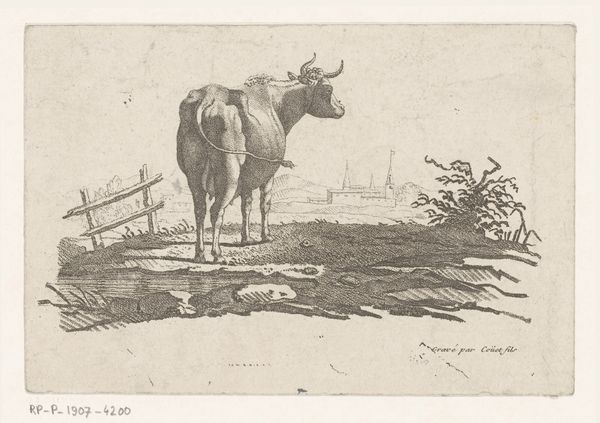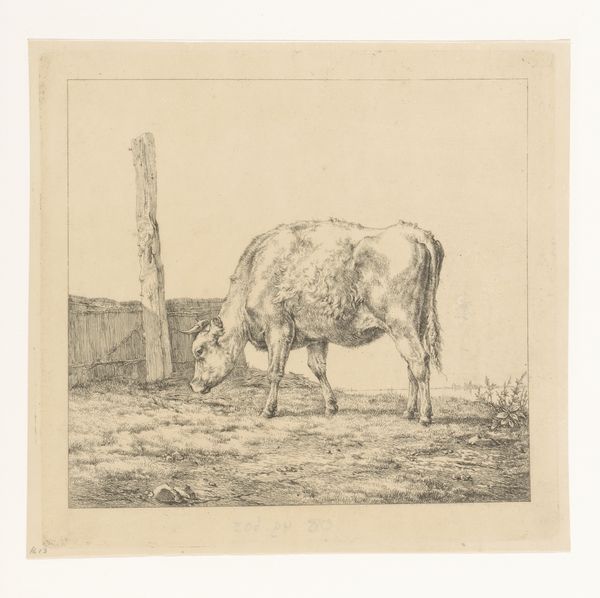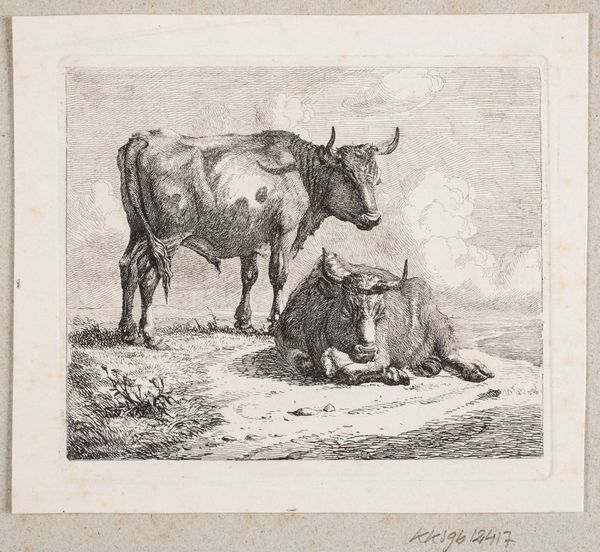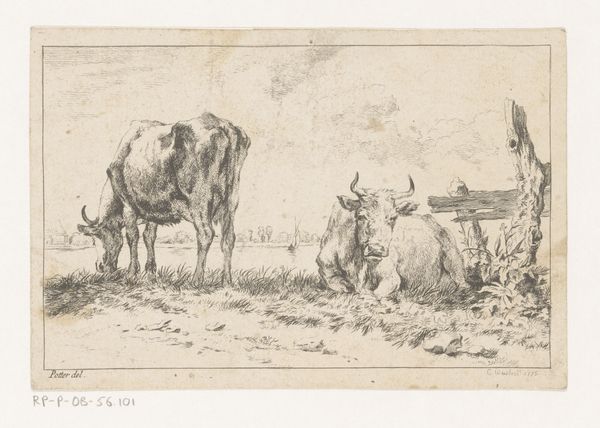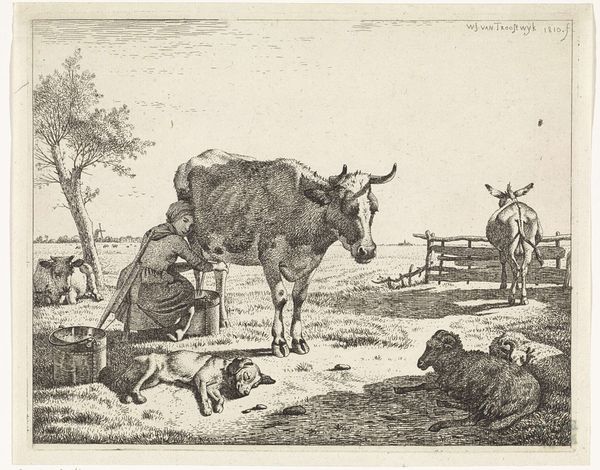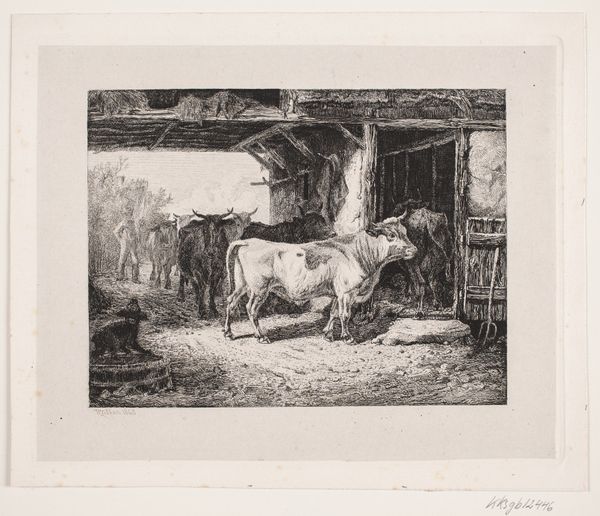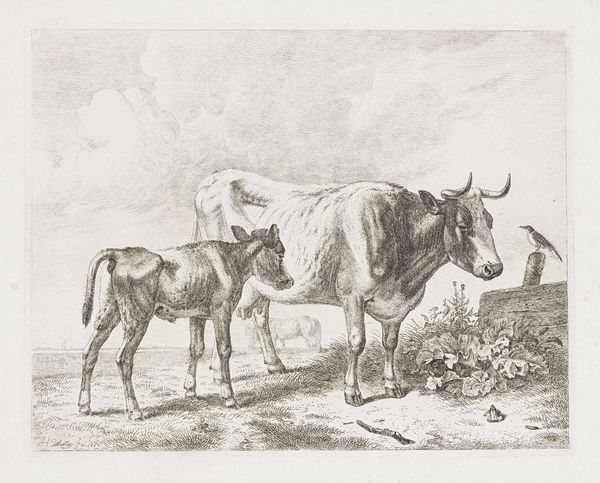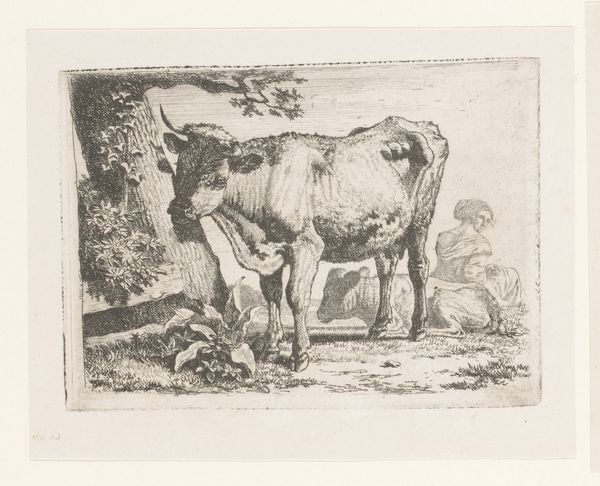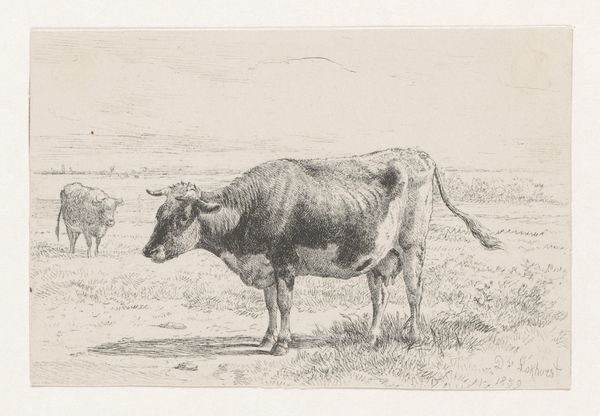
print, etching
# print
#
etching
#
landscape
#
form
#
line
#
genre-painting
#
realism
Dimensions: height 227 mm, width 319 mm
Copyright: Rijks Museum: Open Domain
Curator: Anthony Jacobus Offermans created "Koe bij schuur," which translates to "Cow by Shed," sometime between 1809 and 1872. It's an etching. Editor: What strikes me immediately is the rustic serenity. There's an understated dignity about the cow. Curator: I see what you mean. The composition is cleverly structured; the strong horizontal of the ground plane provides a stable base, contrasted by the more vertical orientation of the shed. The varying densities of the lines creates depth, pulling your eye back towards the distant windmill. Editor: The cow, though, she is the focus. The symbolic weight of the cow throughout art history – plenty, sustenance, maternal power – it’s all quietly there. She becomes almost monumental against the ordinary shed, standing watch, a matriarch perhaps. Curator: An astute reading. I am drawn more to the formal language at play: note how Offermans’ employment of line varies from crisp, defined contours defining the animal to looser hatching to convey textures on the shed. Observe also the light; it appears soft, northern light—subtle and diffused, rendering the scene almost pastoral. Editor: The placement of that discarded lobster pot, though—a curious inclusion. A reminder of what? Coastal industry? Food for sale? There’s more narrative suggestion there, complicating that placid feeling. Maybe life for that matriarch isn't so quiet, always surrounded by the reminders of work and commerce. Curator: You propose interesting counter-readings. Perhaps it's less an iconographic statement, and more an arrangement of shapes. It fills a void; the objects create rhythm and balance that the scene would otherwise lack. Without them the overall visual scheme would fall apart. Editor: A valid assessment. I’m left considering how everyday objects quietly carry cultural meaning—each one contributes a story about how humans co-exist with nature, especially these steadfast creatures. Curator: Yes, and considering the pure compositional technique further illuminates the aesthetic intention that allows such symbolic meaning to unfold.
Comments
No comments
Be the first to comment and join the conversation on the ultimate creative platform.

